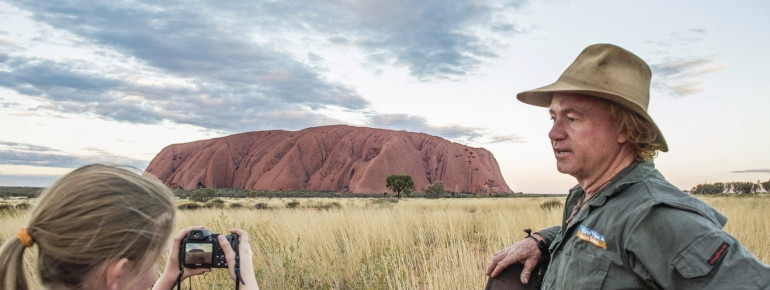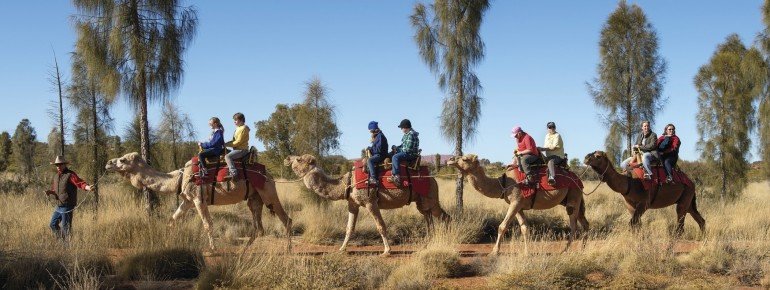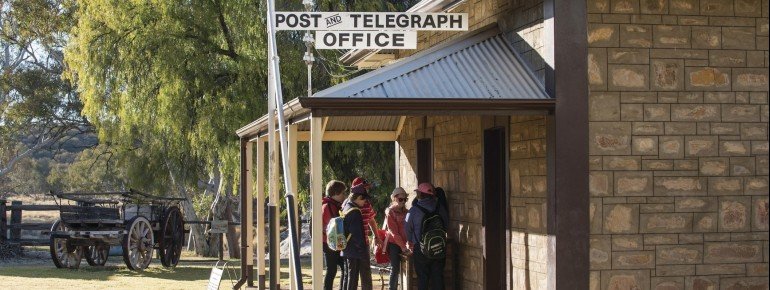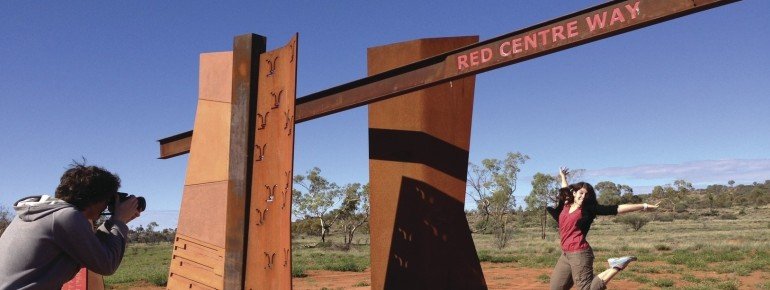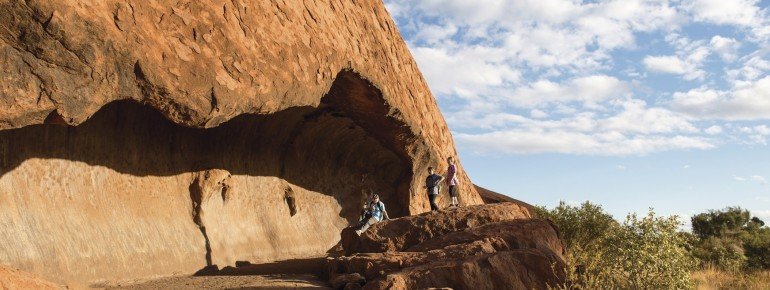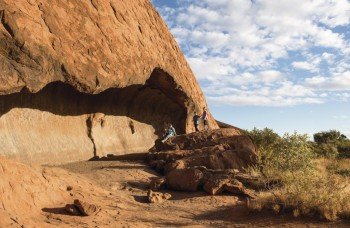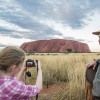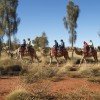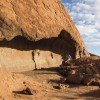Contents
Description
Description
Ayers Rock or Uluru, as the Aborigines refer to the red rock formation, is a listed UNESCO world natural and cultural heritage site. It goes without saying that this rock is the most famous and popular sight in Australia, located in the Uluru-Kata Tjuta National Park amidst the Red Centre. Surrounded by desert, the Uluru can be explored on foot, from the air or by riding a camel or Harley Davidson. If you participate in a guided tour, you will learn more about the traditions of Aborigines and how they, as indigenous people to this area, think about the Uluru and what it means to them and their dreamtime. Should you wish to learn more about the Arangu Aborigines, we recommend you to pay a visit to the Uluru-Kata Tjuta cultural centre. This is where you receive information about traditional laws and also have the chance to learn the way of art to represent your culture in a piece of art.
Dimensions of the Rock
Ayers Rock is approximately 3 km (1.86 mi) long and up to 2 km (1.14 mi) large. The circumference is about 9 km (5.6 mi) and its summit 350 m (1,150 ft) high. Ayers Rock is situated amidst the Uluru-Kata Tjuta National Park and is therefore “only” 340 km (211 mi) away from Alice Springs by linear distance.
The Rock’s Splendid Play of Colours
If you wish to ravel to Ayers Rock, you should plan an entire day and arrive as early as possible at the sight. From dawn till dusk you may expect an ever-changing play of colours. Depending on the daytime and incidence of light, the colours change from light pink to violet and blood red. The sky is filled with colours. Promised, you’ll never forget your stay here. Please don’t forget to take sufficient water supply with you.
The Fauna around Ayers Rock
Apart from the breathtaking landscape scenery surrounding the inselberg, the area is home to a stunning flora and fauna. There are more than 170 different bird species making it a paradise for any ornithologist. At the bottom of Ayers Rock and in the surrounding desert you may spot kangaroos, emus, dingos and even wallabies. With one out of three tours you are offered the possibility to participate in a guided tour with one of our park rangers and learn more about traditional medicine, rock art and endemic species.
Overnight Accommodation
If you wish to stay longer than one day at Ayers Rock, you can do so as there are plenty of possibilities to find overnight accommodation. The next reachable accommodation is Longitude 131. If you stay in a tent, you have the chance to witness the Uluru in all its beautiful colours.
You also have accommodations offered at Kings Creek Station, an Australian cattle farm.
The third place you can stay at is the Ayers Rock camp site. Here you are in the middle of the desert, surrounded by nothing except the outback. You may find a nice place to sleep underneath a tree.
Restaurants
The Ayers Rock Resort offers exquisite Australian specialities, for instance, barramundi (Asian seabass), kangaroo or crocodile complemented by a fine glass of wine. Additionally, you may want to try out a Sounds of Silence dinner, which is an ultimate chance to listen to the stories of a star teller.
More Sights in the Vicinity
The Red Centre has far more to offer than Uluru. Kata-Tjuta is a similar rock formation as Ayers Rock, with the slight difference of being less famous. Three hours away from here you find the Kings Canyon, which is stunningly beautiful in any aspect, whether it's the sandstone walls, water falls or the majestic view over the desert landscape. You may walk around the edge of the canyon and have a closer look at the Watarrka National Park from above. But should you rather want to experience a safari feeling, the Finke Gorge National Park might be the perfect place for you. Here you have the opportunity to undertake tours driving with an off-road vehicle through the canyon.
Please Note
Ayers Rock is a sacred place to the Aborigines. Although climbing here is not officially prohibited, out of respect for the indigenous inhabitants of Australia you are asked to not climb the Ayers Rock.
Historical Information
In the 1990s Uluru used to be the term for the aboriginal population of that area, the Anagu, to whom the red rock in the central Australian desert is a sacred place. It is of high importance to the Aborigines due to its spiritual meaning in the aboriginal dreamtime, which is a mythological term that describes how the “now” has developed in a universal world free of space and time.
Geological History
The Uluru has gone through a long process of development. It was created roughly 550 million years ago. In the course of the so-called Petermann orogeny this particular landscape got formed, first levelled by erosion and then reformed. Through strong rain falls an abundance of debris got carried further down to the bottom of the mountains. Those sediments, the so-called alluvial fans, reached heights of a minimum of 2,500 m (8,200 ft) at that time. The Uluru was formed from one of these fans. The earth's crust motion had an impact on the formation of the rock that ended with the Alice Springs orogeny in the Northern Territory. From there the area exclusively depended on the erosion so that the Ayers Rock massif had gradually grown in the Red Centre landscape scenery. Nowadays, the walls partially protrude from the ground almost vertically. The rock does not end on the ground, though. It is assumed that the rock layers reach into the ground up to 6 km (3.72 mi) deep. That is why, geologically, it can be classified as an inselberg (monadnock).
How to get there
By Car, Bus or Train
Ayers Rock is located approximately 460 km (286 mi) southwest of Alice Springs and can only be reached by a motorised vehicle via the Red Centre Way.
If you're not in the mood to drive on your own, it's best to take the train “The Ghan” from Adelaide to Darwin, which calls in at Alice Springs. Here you have bus connections taking you straight to Uluru.
By plane
You fly to Alice Springs Airport as it's the nearest one to Ayers Rock. This airport serves both national as well as international flights. Coming from abroad you might need to change flights within the country to get here.

